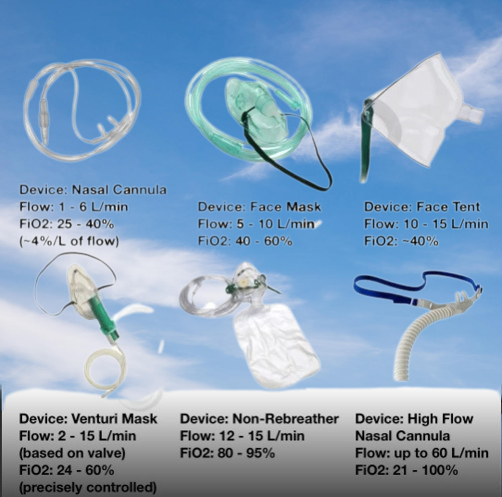
Oxygen therapy is a medical treatment that involves delivering supplemental oxygen to individuals who have low levels of oxygen in their blood. It is used to treat a variety of conditions that can lead to hypoxemia, which is a lower-than-normal level of oxygen in the blood. Hypoxemia can result from various medical conditions such as respiratory disorders, heart problems, or certain chronic diseases. Oxygen therapy aims to increase the oxygen concentration in the blood, improving oxygen delivery to the body's tissues and organs.
There are different methods of administering oxygen therapy, depending on the severity of the condition and the patient's needs:
Nasal Cannula: This is a common method where small plastic tubes are inserted into the nostrils. It delivers a continuous flow of oxygen and is usually used for patients with mild to moderate hypoxemia.
Oxygen Masks: These cover the nose and mouth, providing a higher concentration of oxygen than a nasal cannula. There are different types of masks, including simple masks, partial rebreather masks, and non-rebreather masks, which offer varying levels of oxygen delivery.
Venturi Mask: This mask delivers a more precise and controlled amount of oxygen by mixing it with room air through different color-coded nozzles. This method is often used in cases where precise oxygen concentrations are required.
Oxygen Tent or Hood: These are often used for children who might find it difficult to tolerate other oxygen delivery methods. The tent or hood is placed over the child's head, creating a controlled oxygen environment.
Oxygen Concentrators: These are devices that extract oxygen from the air and deliver it in higher concentrations to the patient. They are often used for long-term oxygen therapy at home.
Oxygen Tanks (Cylinders): Compressed oxygen gas is stored in tanks or cylinders. This method is commonly used in hospitals or when patients need to be mobile.
Hyperbaric Oxygen Therapy: In this therapy, patients breathe pure oxygen in a high-pressure chamber. It's used for treating conditions like decompression sickness, wound healing, and certain infections.
Oxygen therapy is prescribed by medical professionals based on the patient's condition, oxygen saturation levels, and the underlying cause of hypoxemia. Too much supplemental oxygen can have negative effects, so it's essential that oxygen therapy is carefully monitored and adjusted as needed. Long-term oxygen therapy may be necessary for individuals with chronic conditions like chronic obstructive pulmonary disease (COPD) or severe lung disease. Always consult a healthcare provider for proper diagnosis and treatment recommendations.

